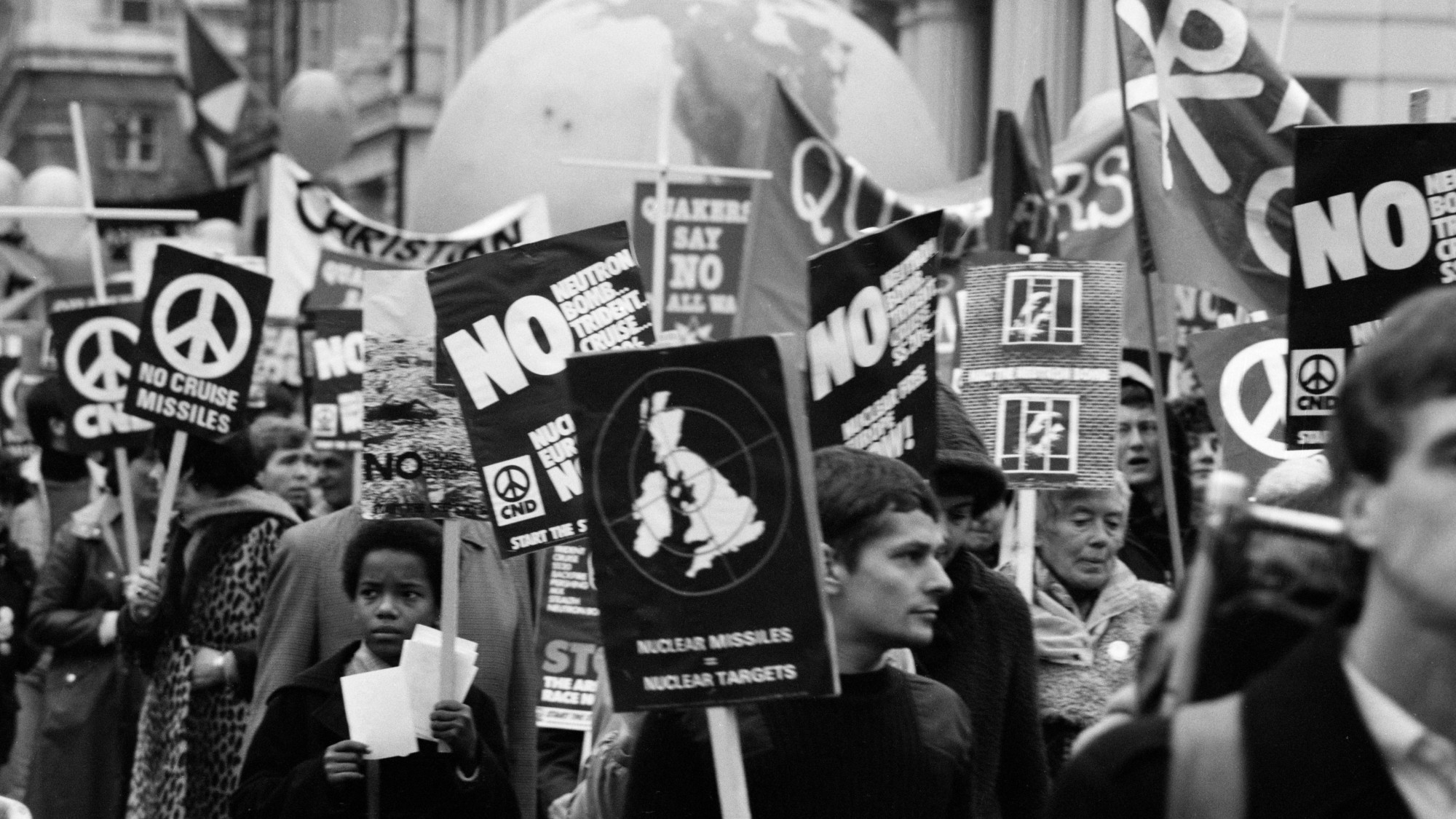What coronavirus studies suggest about the result of easing lockdowns
Are early reopening states dooming themselves to a New York-level outbreak?

American states are beginning to relax their coronavirus control measures, despite the fact that the epidemic is not remotely under control. Daily new confirmed cases are still hovering close to 30,000, and the 7-day average of daily confirmed deaths has been plateaued near 2,000 for about two weeks. New York alone accounts for more than a quarter of total U.S. cases and deaths, but as numbers there have fallen off somewhat they have been balanced by rises in other locales.
Are states like Texas, Ohio, and Georgia about to cast themselves into the same deadly abyss as New York state? It will likely depend on how these lockdown relaxation orders are implemented, and how the residents of those states behave in response.
Let me start by reviewing some recent science — with the provisos that the science on coronavirus is still in its early stages, and I of course am not an infectious disease specialist. All conclusions here must be considered tentative.
The Week
Escape your echo chamber. Get the facts behind the news, plus analysis from multiple perspectives.

Sign up for The Week's Free Newsletters
From our morning news briefing to a weekly Good News Newsletter, get the best of The Week delivered directly to your inbox.
From our morning news briefing to a weekly Good News Newsletter, get the best of The Week delivered directly to your inbox.
Several studies on coronavirus transmission have found that contained environments like buildings, trains, cars, or buses are where the vast majority of infection happens. A study on 318 individual outbreaks that infected three or more people in China found most happened in homes, and about a third in transportation — but only one outdoors. A study on an infection cluster in a Guangzhou restaurant found one pre-symptomatic person likely infected others (which has been demonstrated in Singapore as well) because the air conditioning system circulated air from the person to neighboring tables. People sitting nearby but out of the air flow path escaped infection — but note again this person was pre-symptomatic, so was surely less infectious than someone who was coughing. A study of two Chinese hospitals similarly found heavy contamination in surfaces and objects frequently touched by medical personnel, especially in intensive care wards.
The dynamics of the disease progression are also important. As noted, it seems that infected people without symptoms can spread the disease, and these may be a big fraction of the case total. A study of an Italian town did two broad surveys of tests, and found 43 percent of positive cases had no symptoms. A case of COVID-19 also takes a long time to progress. Other studies on transmission dynamics found an incubation period (that is, the time between being infected and showing symptoms) of about five days, as compared to about two days for most common cold viruses. People being able to infect others unknowingly is probably part of why without controls the virus spreads extraordinarily quickly.
This research points to a possible set of reasons why the outbreak in New York state is so much worse than anywhere else in the country. First, denser cities where lots of people are in close contact in enclosed spaces will be more vulnerable. Probably the subway was a major vector of contagion, since New York City is the only place in the U.S. where a majority of households do not own a car.
But vulnerability does not translate to an automatic outbreak. Hong Kong, Singapore, and Taipei are all about as dense as New York City, and just as reliant on public transportation, but did not have galloping outbreaks because their governments got on top of the situation quickly. San Francisco is only somewhat less dense than New York, and seems to have had infected cases nearby before New York did — it turns out the first known COVID-19 death in country happened in the Bay Area on February 6 and came from community spread. As Wanlin Fang and Sameh Wahba demonstrate at the World Bank, data shows virtually no correlation between population density and outbreak severity. By far the most important factor in epidemic severity is how the government responds.
A free daily email with the biggest news stories of the day – and the best features from TheWeek.com
It is rather peculiar that San Francisco and other West Coast cities did not have a gargantuan epidemic, given how early it must have been in the wild in those places (at time of writing California has recorded only about 8 percent as many deaths as New York state). A reasonable supposition is that the exponential growth was still in its early stages during February, with perhaps only a few tens of thousands of people infected when local authorities started to take action. Perhaps they just got lucky and managed to avoid any super-spreader events.
As Charles Duhigg reports in The New Yorker, while California and Washington state implemented epidemic control measures immediately when their scientific advisers recommended it, New York Governor Andrew Cuomo and New York City Mayor Bill de Blasio did not. They dithered, dragged their feet, muzzled their scientists, and bickered with each other for weeks while the pandemic was gaining momentum. When they finally did implement control measures, it was too late — the virus had already spread like wildfire. As Duhigg writes, "Tom Frieden, the former C.D.C. director, has estimated that, if New York had started implementing stay-at-home orders 10 days earlier than it did, it might have reduced COVID-19 deaths by 50 to 80 percent."
This paints a rough picture of what authorities and citizens should worry about if and when they start relaxing their control measures. More rural and suburban locations are likely somewhat less vulnerable than New York City, but they are not remotely immune. What matters is not density per se, but the presence of confined spaces with lots of people in them for a long time — and there are plenty of retail stores, restaurants, salons, gyms, and so forth in the suburbs. Recall also that transmission in the home was the single biggest route of spread in China. Even detached single-family homes can become viral incubators — and larger household sizes increase risk. If an epidemic gets going, we already know it can rip through the suburban environment. New York City suburbs of Rockland and Westchester County have had extremely severe outbreaks despite being far less dense than the urban core — indeed, both have a higher per capita positive test rate than any of the five boroughs of the city proper (though the death rate is lower than Brooklyn, Queens, or the Bronx).
If I were a governor or a business owner, I would be extremely leery of opening up businesses where people hang out indoors a lot at this point in the outbreak. We already know that the disease can spread quite quickly even in low density environments, and if authorities wait until a resurgence is undeniable, it will already be too late. Even if they are opened, at-risk people should probably not be going to dine-in restaurants or bars — especially because it is impossible to eat or drink while wearing a mask. Gyms, barber shops, or salons are probably only slightly less risky.
By contrast, it should be possible to open up outdoor locations relatively safely. Parks and beaches seem to be low-risk, so long as people wear masks and keep their distance from strangers. Cities ought to consider closing off streets or parking lots so restaurants could set up outdoor cafes, with a good distance between tables. However, authorities should keep public facilities like restrooms closed, if possible, or sanitize them very regularly at the least.
In order to go beyond that, countries with functioning governments like Germany and South Korea have built overarching national control schemes that can spring into action in case of infection clusters. This means huge testing and contract-tracing apparatuses to track down any incipient major outbreaks, plus isolated quarantine facilities so infected people do not go home and spread the disease to their families. But America is not doing anything like that yet, and it seems like no level of its government is even going to try.
Ultimately, neither American states nor the federal government are taking anything close to the responsible path here. Texas, Georgia, and other states do indeed plan to reopen restaurants, gyms, salons, movie theaters, and other such locations. Guidelines do generally state that capacity should be limited, but that may not provide much protection at all, given the study on climate control systems spreading infected droplets around widely. (Business owners might consider rejiggering their climate systems so air is not recirculated within the building.) If people actually do flood back into these spaces — a big if, to be sure — I would expect at least modest surges in infections, and perhaps more full-blown epidemics.
In that case, it is quite possible the virus will continue circulating indefinitely. One study done in China found that a substantial fraction of recovered COVID-19 patients had relatively low levels of antibodies, and a few had almost none — suggesting a possibility of reinfection risk. A study modeling coronavirus transmission based on similar viruses suggests immunity may not be permanent, so it is very possible the virus will become endemic like influenza currently is, remaining relatively dormant during the summer and surging back when the weather gets cold.
Given the rottenness of the United States political system, the only realistic hope for truly beating this virus and returning to normal may be a vaccine. Several research teams around the world are working frantically on different versions. Let's hope one of them succeeds, because with President Trump in office, it's all we've got.
Want more essential commentary and analysis like this delivered straight to your inbox? Sign up for The Week's "Today's best articles" newsletter here.
Ryan Cooper is a national correspondent at TheWeek.com. His work has appeared in the Washington Monthly, The New Republic, and the Washington Post.
-
 The history of US nuclear weapons on UK soil
The history of US nuclear weapons on UK soilThe Explainer Arrangement has led to protests and dangerous mishaps
-
 Tea with Judi Dench: ‘touching’ show is must-watch Christmas TV
Tea with Judi Dench: ‘touching’ show is must-watch Christmas TVThe Week Recommends The national treasure sits down with Kenneth Branagh at her country home for a heartwarming ‘natter’
-
 Codeword: December 24, 2025
Codeword: December 24, 2025The daily codeword puzzle from The Week
